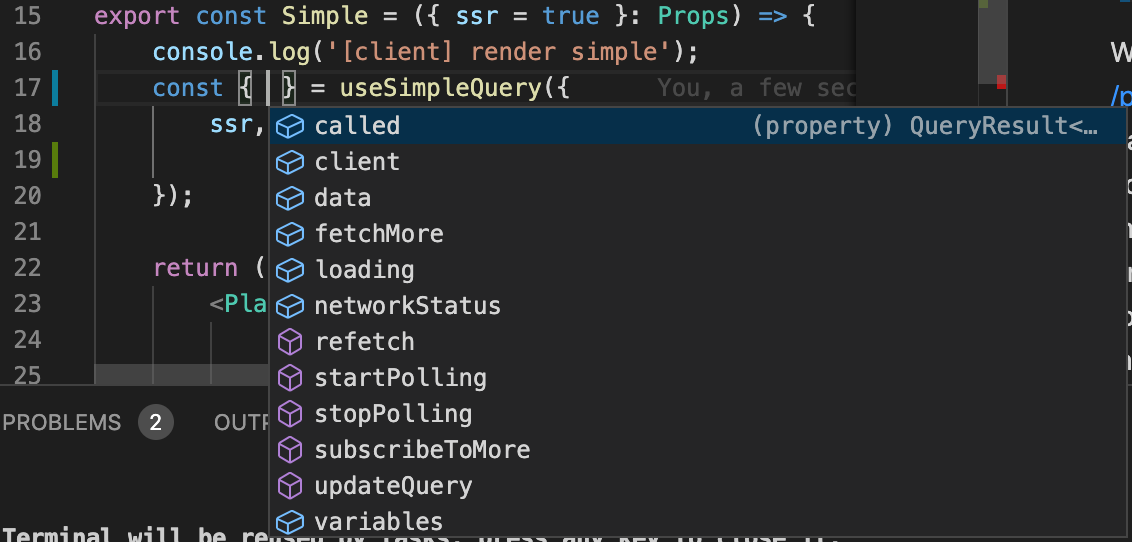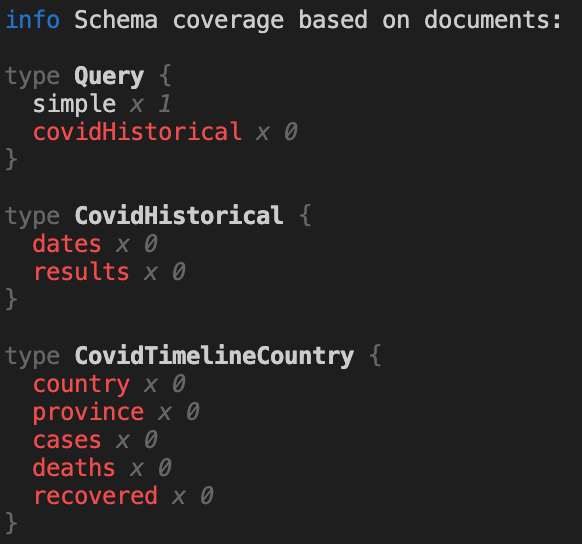-
Notifications
You must be signed in to change notification settings - Fork 1
Setup of workspace
Welcome at this setup for quick starting with GraphQL. Overhere you will find some information about the setup you are now using, by simply running
yarn dev
We have the server in this location /pages/api/graphql. In the main file you find the basic configuration of the graphql server where you can set things like context, run in mocked mode etc. You will also find the schema (interfaces) and resolvers (services). In these three different files you can do everything you have to do for our workshop. Our own team is using graphql-modules but since its moving to V1 we keep the workshop as simple as possible so everyone can enter.
We have our frontend application in these locations pages/index (page) and /modules (modules/features). For the client we use Apollo, see 'createApolloClient' for its configuration.
When creating a feature be sure to have a '*.graphql' file where you defined what you need (query/mutation). When you added that need the autogen will create react hooks for you automatically. So you can start with your component. Be sure to pace the component on the page, to actually see it :)
So from the '*.graphql' file in Simple component it generates:
import { useSimpleQuery } from '../../codegen/_graphql';and this query returns data, error loading etc. Also you will be able to add variables to the Query.
So from your editor you will see all options it returns:

and the options you can provide:

vscode prisma graphql plugin gives autocomplete on queries and shows the documentation inline. You don't need to go to the playground. All GraphQL usage can be done from the editor!
available queries, with documentation:

autotyping on data need:

We use some tooling provided by The Guild
For auto generating we are using graphql-code-generator
During development this runs in autowatch mode.
yarn codegen

This auto generates all our TypeScript types: used documents, interfaces, (lazy)hooks and resolvers.
These can be used on the server:
import { Resolvers } from '../../../codegen/_graphql';
export const resolvers: Resolvers = {
Query: {
simple: () => {
console.log('[server] GraphQL server query: simple');
return 'Welcome to the AH GraphQL workshop';
},
},
};But certainly in the client:
import { useSimpleQuery } from '../../codegen/_graphql';
export const Simple = () => {
const { data } = useSimpleQuery({
ssr,
});
return (
<Plain>
<p>{data?.simple}</p>
</Plain>
);
};In the client it then gives autotyping of all data you requested. You heave your feature and your query/mutation in the same place.
For schema utilities we are using graphql-inspector. We also use this centralised in Github as action. Besides your editor giving feedback you can also run these npm commands:
yarn schema:diff: it detects breaking changes in the schema

yarn schema:linter: are you changes according to the basic rules?

yarn schema:validation: is schema usage valid?

yarn schema:coverage: what of the total schema is your application using
